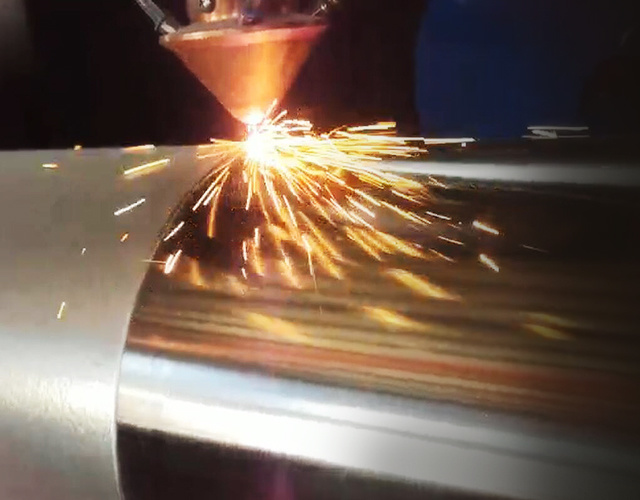Are you really clear about the content of the precision laser cladding equipment?
Precision Laser Cladding Machine It originated in the 1980s. It uses a high-energy-density laser beam to coat materials with special properties onto the surface of a substrate and fuse them with the substrate. The material surface and substrate are melted together, forming an alloy coating layer that is completely different in composition and properties from the substrate. The role of the laser cladding machine is not only to improve the performance of the material surface layer, but more importantly to give it new properties, reduce manufacturing costs and energy consumption, and save limited strategic metal elements.

Laser Cladding Machine This refers to placing the selected coating material onto the surface of the substrate to be coated using different additive methods. Laser irradiation melts a thin layer on the substrate surface simultaneously, followed by rapid solidification. This forms a surface coating with extremely low dilution and metallurgical bonding with the substrate, significantly improving wear resistance, corrosion resistance, heat resistance, the oxidation resistance and electrical properties of the substrate surface. This achieves surface modification or repair, meeting the requirements for specific properties of the material surface while saving a large amount of precious elements.
Based on the current application status of laser cladding machines, they are mainly used in three aspects: First, material surface modification, such as gas turbine blades, rolling mills, and gears. Second, surface repair of products, such as rotors and molds. Relevant data shows that the strength of repaired parts can reach more than 90% of the original strength, and the repair cost is less than 1/5 of the replacement price. More importantly, it shortens the repair time and solves the problem of rapid repair of rotating parts, a critical issue for the continuous and reliable operation of large-scale enterprise equipment. In addition, on the surface of key parts, Laser Cladding Machine Ultra-wear-resistant and corrosion-resistant alloys can greatly extend the service life of parts without deforming the part surface. Laser cladding machine processing of mold surfaces not only improves mold strength, but also reduces manufacturing costs by 2/3 and shortens the manufacturing cycle by 4/5. Third, rapid prototyping. This model can quickly manufacture parts by sintering and stacking metal powder layer by layer.
Laser cladding machines are also particularly suitable for refractory metals, heat-resistant alloys, titanium alloys, and other dissimilar metals with significant differences in thermophysical properties, workpieces with significant differences in volume and thickness, and components that are easily flammable, prone to cracking, or prone to explosion when heated near cold air. Compared with vacuum electron beam welding, automatic laser welders have the advantages of not producing X-rays, not requiring a vacuum chamber, and having no limitations on workpiece size. Laser welding can be used as a fine machining process, resulting in beautiful weld seams. In many cases, cold air can be as strong as base metals.
Precision Laser Cladding Machine It can meet the purpose of quickly fine-tuning the resistance to achieve a precise preset value. Laser technology can also be used to correct the capacitance of chip capacitors and fine-tune hybrid integrated circuits. The excellent positioning accuracy improves the output and circuit functions in the miniaturization of precision linear combination signal devices. The precision laser cladding machine can replace electroplating as a new type of high-energy beam plating technology, which is of great significance to the production and repair of microelectronic devices and large-scale integrated circuits.
Related Information
RELATED INFORMATION
2022-08-26 10:09
2022-08-16 15:13
2022-08-08 10:10
Leave a message
MESSAGE CONSULTATION









